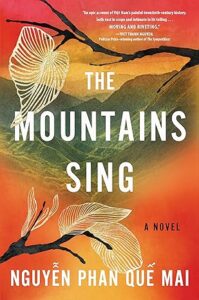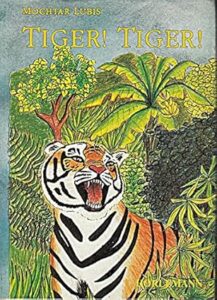Has it happened to you that you read about a person or an event and it blew your mind away? You decide that is the perfect subject for a picture book biography. However, while writing, you face a big problem. The material is not enough to write a biography because any sentence in a biography should be 100% verifiable. If you write the character’s hand was shaking while playing piano, this SHAKING HAND should have a documented reference! The person should have said that exact thing in an autobiography or in an interview! We cannot write biography picture books about many women because of the lack of documented material. The same restriction exists for marginalized groups, minorities, and even lesser-known contemporary men.
My solution, for a while, was to give up and forget about that person. Until I read this blog post and discovered the magic of historical fiction!
What is historical fiction?
Historical fiction is a subgroup of Informational fiction (or Info-Fic or Fic-informational). Informational fiction presents facts and information within a fictional story. These stories may include made-up dialogue, fictional characters, and/or made-up descriptions. However, the essential historical information is verifiable and based on documented research. Here is a good blog post about informational fiction and narrative nonfiction.
Cautions:
In the description of books on the publishers’ websites or on Edelweiss+, I have read many times that historical fiction are categorized as biographies. Be aware the description that the marketing team writes is not necessarily accurate.
Why does writing historical fiction matter?
Historical fiction is an invaluable tool to write stories about people or events that we cannot write a biography about.
The first example I want to discuss is Crossing Bok Chitto (2006) by Tim Tingle and Jeanne Rorex Bridges. This picture book is an ode to humanity. In the 1800s, the river Bok Chitto was a border between freedom and slavery. On one riverside, the Choctaw Nation lived, and on the other side landowners with their slaves. Slaves who crossed the river were free. That was the rule. This picture book is about the friendship, growing between a Choctaw girl and a slave boy. The girl taught the boy to cross the river and every Sunday they meet up. Until one day, the boy’s mother got sold! His father announced that was the last evening together and they were never going to meet their mother again. I amn’t going to spoil the story. If you don’t have it in your local library, here is a Youtube read-aloud. See the impact of historical fiction for yourself.

Overground Railroad (2020) by Lesa Cline-Ransome and James E. Ransome tells the story of the Great Migration through a child’s eye. The author created fictional characters—a child with her family—who rides the train and migrates towards the north. There is no way to write a biography about this train ride because we don’t have enough information. This historical fiction gives a deep feeling about the fear and uncertainty those immigrants felt.

Having said that, lack of documented resources is NOT the only reason for writing historical fiction. Historical fiction can show the influence some people left on their society. I will explain more with some picture book examples.
The Lady with the Books: A Story Inspired by the Remarkable Work of Jella Lepman (2020) by Kathy Stinson and Marie Lafrance has two fictional characters: Anneliese and her brother, Peter. The story is about a marvelous German woman—Jella Lepman—who came back to Germany, right after the end of World War II. When Germany was nothing more than a ruin, she believed books are the only help for children. She wrote letters to publishers around the globe and asked them to donate books. With the donated books, she organized the first international exhibition in Germany, only a few months after the war. Those books became the first books of the international youth library in Munich (The library is still active here, in Munich).
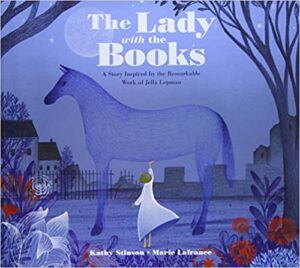
This story shows the difficult life of German children after the war and how much books brought hope to them. I don’t think a picture book biography about Jella Lepman could show her influence as profound as historical fiction did.
Another example is Back of the Bus (2013) by Aaron Reynolds and Floyd Cooper. The story has two fictional characters: a boy and his mother on a bus in Montgomery, Alabama. It tells the story of Rosa Parks. There are plenty of resources to write a biography about Rosa Parks and many picture books have been published on Parks’ life. However, this story aims to tell something different.

The boy plays with marble and the marble is a symbol. Once the marble rolls away from the boy and Rosa Parks takes it and returns it to the boy. Then, Rosa got arrested. After a long waiting, the bus moves and the boy continues playing with the marble. He holds the marble against the sun shining!
Writing historical fiction
Now, let’s get to the main question: how to write a historical fiction picture book? Reading many examples brought me to the conclusion that there are two possibilities:
- Inforamtion is scarce. Based on the person’s life make a narration.
- Create a fictional character (human or animal) and fit the person/event inside the story.
This conclusion is mine and it could be wrong. Please let me know if you have another opinion or know other possibilities. I explain my points with examples.
Expand’s facts of a person’s life into a story
- An example is The Oldest Student: How Mary Walker Learned to Read (2020) by

- I Am Mozart, Too: The Lost Genius of Maria Anna Mozart (2022) by Audrey Ades and Adelina Lirius is another example of a real person—Anna Mozart. To write a story of her life, the author had to fill many gaps in between.
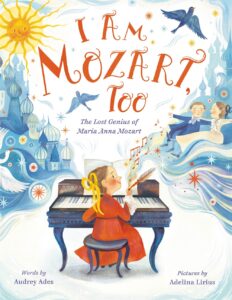
- The same situation is about Khutulun, a Mongol noblewoman. However, writing a biography of her life by only having dry historical information is impossible. Here we go. A historical fiction: Warrior Princess: The Story of Khutulun (2022) by Sally Deng.

- A similar picture book is about a Chinese princess. Beautiful Warrior: The Legend of the Nun’s Kung Fu (1998) by Emily Arnold Mccully

- A Character doesn’t need to be a human. Rags: Hero Dog of WWI: A True Story (2014) by Margot Theis Raven and Petra Brown is about a stray dog in WWI. Private James Donovan found him in Paris’ street and the friendship grew between them.
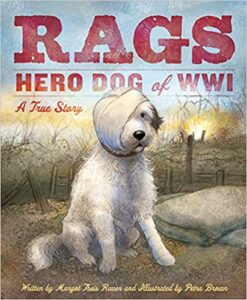
Create a fictional character
Human Fictional Character
- The fictional character of A Single Pebble: A Story of the Silk Road (2013) by Bonnie Christensen is a girl from the 9th century. The character gives her father a small jade pebble. The story tells the story of the silk road!

- The main character—Bernard—in Waiting for Pumpsie (2017) by Barry Wittenstein and London Ladd is a fictional character. It tells the story of Pumpsie Green’s rise to the major leagues.
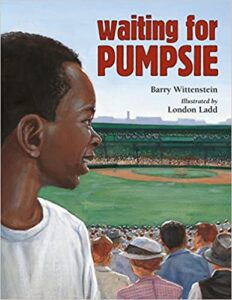
- Historical fiction doesn’t need to be about famous people or events. Memories could be told in stories. Boxes for Katje (2003) by Candace Fleming and Stacey Dressen-McQueen is based on the author’s mother’s childhood. This is a story of a dutch girl after World War II and the boxes she receives from America.
- Another interesting example is Lumber Jills: The Unsung Heroines of World War II (2019) by Alexandra Davis and Katie Hickey. In World War II, Great Britain needed lumber to make planes, ships, and even newspapers―but there weren’t enough men to cut down the trees. This picture book is the story of the women, mostly with no prior woodcutting experience, came together and did the job! The interesting point is that the characters have no name!
Animal Fictional Character
The fictional character doesn’t need to be a human. It can be an animal. An important point: don’t confuse an animal character with an inanimate Narrator. When you create a fictional animal character, the Narrator could be that animal, or a Narrator from outside of the story’s world can look at that animal and tells the story. I will explain more on the first example.
- In Benno and the Night of Broken Glass (2010) by Meg Wiviott and Josée Bisaillon, a cat—named Benno—lives in Berlin. The Narrator tells how much Benno’s life changes when the Nazis came to power.
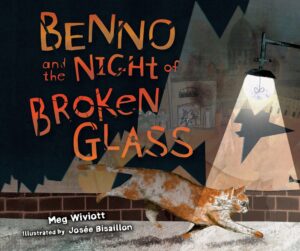
- In Sadako’s Cranes (2015) by Judith Loske a cat is telling the story of the very short life of f Sadako Sasaki, who lived in Hiroshima when the atomic bomb was dropped on August 6, 1945, Sadako’s Cranes tells the story of her battle with leukemia.

- I love this book because it shows a power of an author in writing a story of the dark days. The Cats in Krasinski Square (2004) by Karen Hesse and Wendy Watson is about the Warsaw Ghetto. In the back matter, the author says she had read a short article about cats out-foxing the Gestapo at the train station in Warsaw during WWII. Then she wrote this story
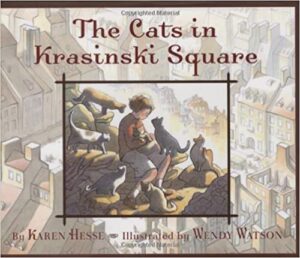
Suggestions for further reading
In this blog post, I didn’t aim to give an exhaustive list of historical fictions. I wanted to discuss the importance of writing historical fiction.
Here are some lists of historical fiction picture books for further reading:
- List from ReFoReMo Facebook page (link). Most titles aren’t recent.
- picture book brain link
- A good list link
- A good list link. Some examples are middle grades
I write blog posts about the craft of writing picture books regularly. The list of the previous posts is on the PictureBookPedia. Also, I publish a quarterly newsletter that includes links to my recent blog posts. The form you have selected does not exist.




